Toshiba Qosmio X775: Toshiba's Gamer Grows Up
by Dustin Sklavos on August 17, 2011 12:25 AM ESTBattery, Noise, and Heat
The major update with the Toshiba Qosmio X775, beyond just being in a smaller chassis than its monster predecessor, is the GeForce GTX 560M. NVIDIA's 500M series supports Optimus graphics-switching technology top to bottom, and even though Toshiba only ships the Qosmio with a pitiful 48Wh battery, the 560M should let it eke out a decent running time off the mains.
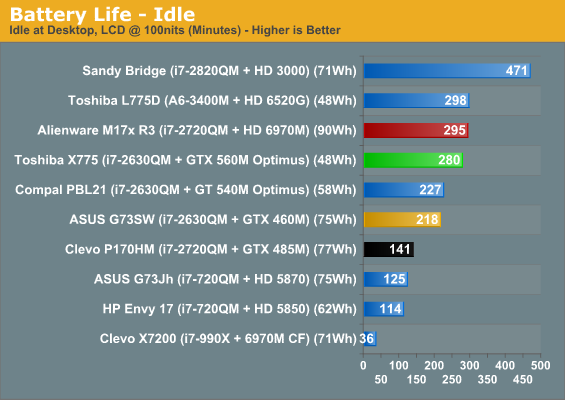
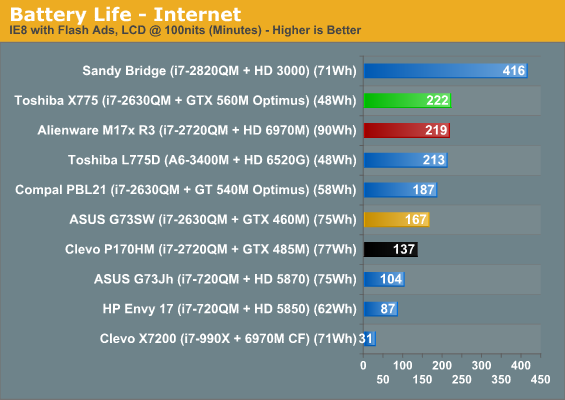
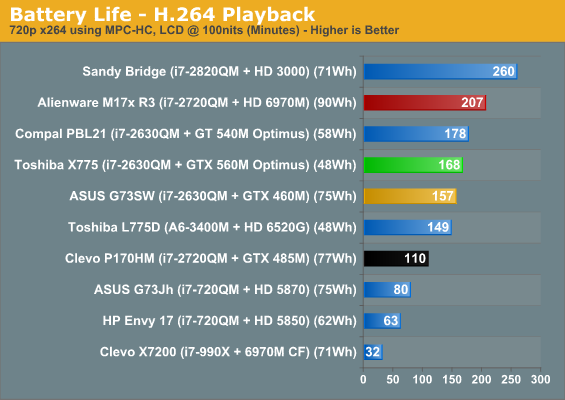
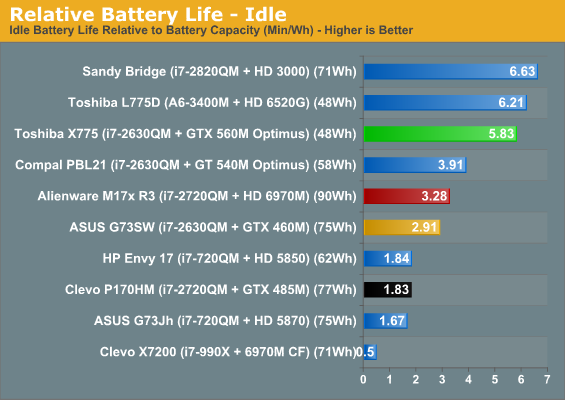
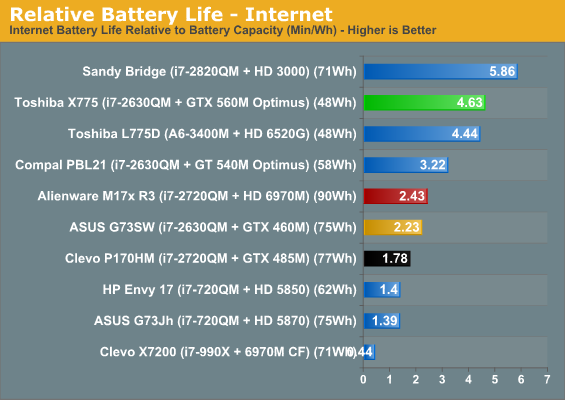
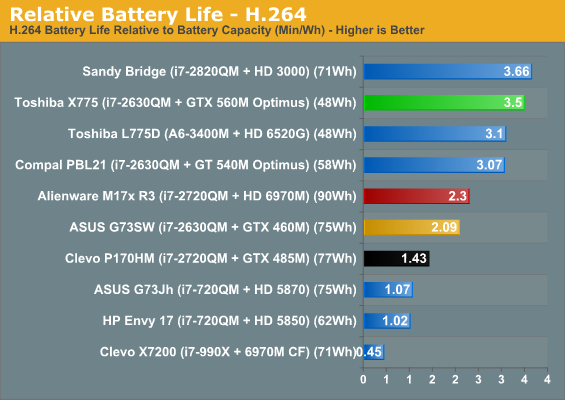
Now that's what I'm talking about. This is the future, folks, and is probably a good reason why NVIDIA's 500M series has seen as many OEM wins as it has. Even being able to switch the graphics in the M17x R3 using the Radeon HD 6970M, NVIDIA's much cleaner Optimus approach runs wild over the competition. The battery Toshiba equips the Qosmio X775 with is embarassingly small, yet it still provides nearly four hours of running time, heretofore unheard of in a gaming notebook.
That said, we did run into a little bit of trouble with Optimus. While the technology generally runs well, for our 720p playback test we had to specify the IGP be used instead of the 560M. If the 560M provided a substantially better experience, that might be a good idea, but Intel's HD 3000 generally does a good job at decoding H.264 content and thus the default ought to be doing that work on the IGP.
In terms of heat and noise the Qosmio X775 was a surprisingly well-behaved guest, but at least some of that is going to be due to the battery design. The battery actually sticks out of the bottom (despite not being extended), tilting the notebook upward and allowing air to flow through. I generally prefer a tilted notebook, and you really shouldn't be running a gaming notebook on your lap if you can avoid it, but I can see where some users are going to take issue with it.

The CPU runs a bit toasty, but mercifully none of the major heat issues really translate to the end user's experience. The hottest point on the surface under load is the left side of the keyboard, but it's not uncomfortable, and the palm rests thankfully don't get too warm. Meanwhile, fan noise is a low whoosh under load, easily ignored given the system's performance.










25 Comments
View All Comments
Jonahkirk - Thursday, August 18, 2011 - link
When I first saw the New Qosmio, I thought "at last, a notebook for me!" But, I thought i was looking at aluminum, not plastic, and no 1080p is a sinker in a high price notebook. I would love to be able to self configure these with a 1080p screen, a proc. upgrade and SSD\hardrive combo. But, I want aluminum-that would be cool.qstechwriter - Friday, August 19, 2011 - link
You can adjust backlight setting to: OFF, 1 sec, and ON. Press the Fn key, press Z, and make your selection.The0ne - Friday, August 19, 2011 - link
17.3" LED Glossy 16:9 1600x900I don't think the laptop will ever be a consideration for either gaming or office work.
JNo - Friday, August 19, 2011 - link
What is it with larger laptops with 2 drive bays always going for a 2x HDD configuration?! (also Alienware are guilty of this). Surely people want an SSD for boot & speed and a traditional HDD for storage, even, or especially, on a laptop.I don't know why laptop manufacturers are so dumb and slow to coming round to implementing this configuration and making it mainstream, especially now that the new mSATA standard is out.
oraclelaw - Saturday, August 20, 2011 - link
well lets see, the G73 w the 460m pulls down a 3dmark11 of 1800 something?the Qosimo with the gtx560m pulls down a 2005?
what do they cost? 1500-1700 US?
well my fully equipped (including blu-ray) overclocked AND undervolted $750.00 HP Dv6z with amd's LLano chip, pulls a 3dmark11 of p2110 with a graphics score of just under 2200...at much cooler temps.
Maybe I should buy another to even things up...LOL. .Time for the 'i' series boxxes to start coming down in price.
Seer